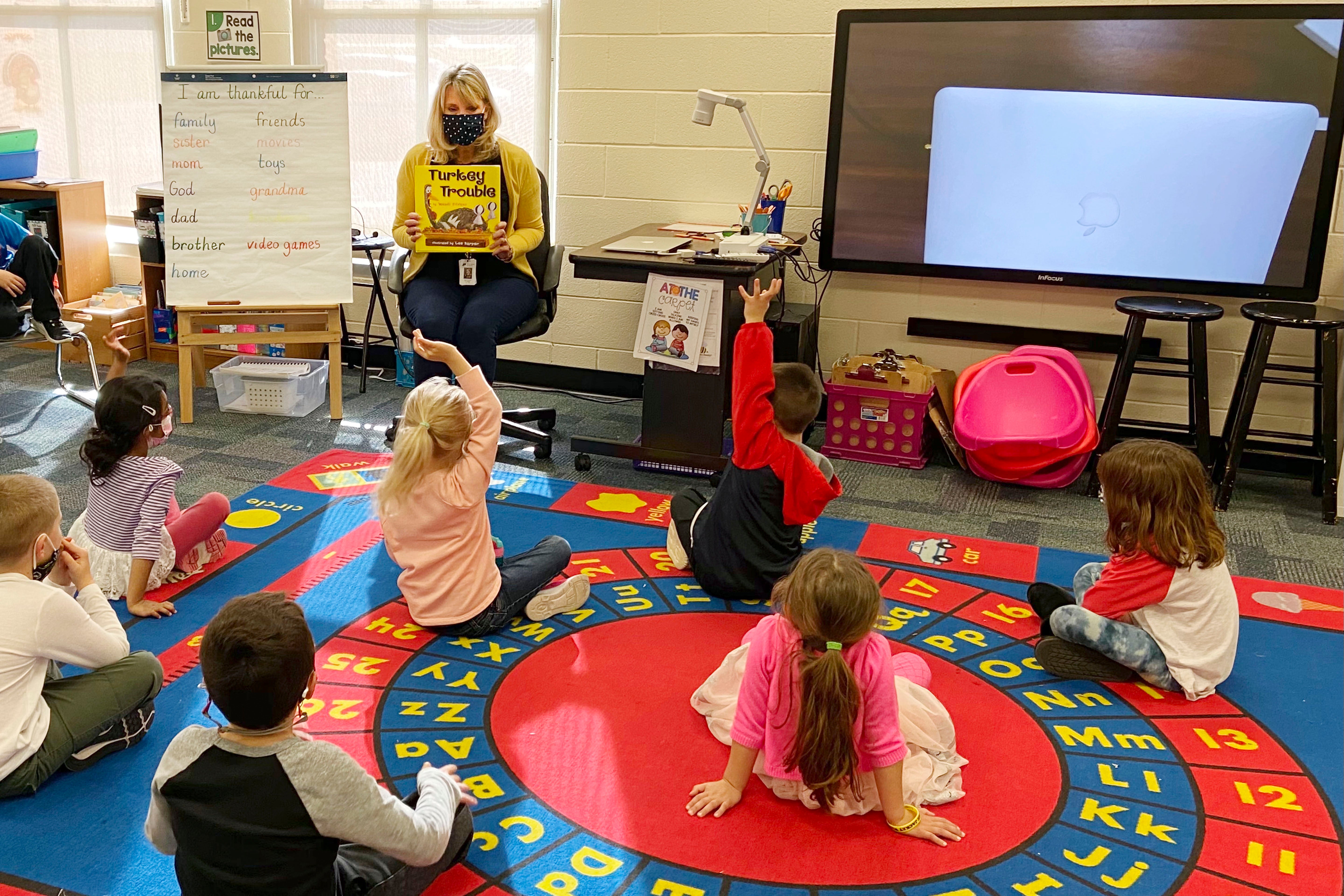Schools struggle to stay open as quarantines sideline staff
Contact tracing and isolation protocols meant to contain the spread of the coronavirus are sidelining school employees and frustrating efforts to continue in-person learning

Your support helps us to tell the story
From reproductive rights to climate change to Big Tech, The Independent is on the ground when the story is developing. Whether it's investigating the financials of Elon Musk's pro-Trump PAC or producing our latest documentary, 'The A Word', which shines a light on the American women fighting for reproductive rights, we know how important it is to parse out the facts from the messaging.
At such a critical moment in US history, we need reporters on the ground. Your donation allows us to keep sending journalists to speak to both sides of the story.
The Independent is trusted by Americans across the entire political spectrum. And unlike many other quality news outlets, we choose not to lock Americans out of our reporting and analysis with paywalls. We believe quality journalism should be available to everyone, paid for by those who can afford it.
Your support makes all the difference.The infection of a single cafeteria worker was all it took to close classrooms in the small Lowellville school district in northeastern Ohio, forcing at least two weeks of remote learning.
Not only did the worker who tested positive for the coronavirus need to quarantine, but so did the entire cafeteria staff and most of the transportation crew, because some employees work on both. The district of about 500 students sharing one building had resumed in-person instruction with masks and social distancing and avoided any student infections. But without enough substitute workers, administrators had no choice but to temporarily abandon classroom operations and meal services.
“It boils down to the staff,” Lowellville Superintendent Geno Thomas said. “If you can’t staff a school, you have to bring it to remote.”
Around the country, contact tracing and isolation protocols are sidelining school employees and closing school buildings. The staffing challenges force students out of classrooms, even in districts where officials say the health risks of in-person learning are manageable. And the absences add to the strain from a wave of early retirements and leaves taken by employees worried about health risks.
It’s another layer of the “tremendous stress” faced by administrators and educators navigating the pandemic, said Dan Domenech, executive director of AASA, the nation's leading school superintendents association.
The superintendent in Groton, Connecticut, recently announced the entire district would transition to distance learning for two weeks following Thanksgiving — a decision driven primarily by a staffing shortage.
“When you have the wrong teacher, like an art teacher who over a two-day period sees as many as 80 children, you’ve got the possibility of a really significant number of contacts,” he said. “It's not being transmitted in schools apparently, but we have lots of cases of children and staff members who are getting it very typically from a family member.”
In Kansas, the 27,000-student Shawnee Mission School District announced recently that middle and high school students would return to remote learning until January because of difficulty keeping buildings staffed. Scores of employees are quarantined because of known or potential exposure.
“It is important to emphasize that this decision is not being made because of COVID-19 transmission within our schools,” Superintendent Mike Fulton wrote to families. He said available substitute teachers would be shifted to elementary schools to keep up in-person learning for younger students.
Social distancing, wearing masks, washing hands and completing daily COVID-19 assessments "seem to be working to keep transmission low within schools,” Fulton said.
The effects of school staffing struggles have prompted some officials to suggest relaxing quarantine rules.
On Monday, leaders of several Louisiana public school systems told the state House health committee that too many students are missing in-person classroom instruction because they have been sent home for 14 days to quarantine. The state health department said it would not recommend any changes to quarantine regulations.
“We have a lot of healthy kids who are home when they don’t need to be,” West Baton Rouge Parish Superintendent Wesley Watts told lawmakers. “We’re not asking to do away with quarantine. We’re just asking for some modifications.”
In Missouri, Republican Gov. Mike Parson took a different approach to trying to keep schools open. He announced new guidance this month that teachers and students exposed to an infected person no longer have to quarantine for two weeks as long as both people were wearing masks. He said quarantines had interrupted learning and created staff shortages.
Shortages of substitute teachers have compounded the personnel problems.
“I think everybody understands when you can’t have enough subs to fill the roles, it’s also a safety issue: You can’t have that many children without support from adults,” said Julie Mackett, a kindergarten teacher in Perrysburg, Ohio, who went through her own two-week quarantine early in the school year after a student tested positive.
Staffing shortages in her district in mid-November moved up the start of a return to remote learning around Thanksgiving for Perrysburg’s high schoolers, and the district was closely monitoring elementary schools.
Cincinnati's public school system pointed to staffing concerns and surging virus cases in southwest Ohio when it decided to shift to distance learning until after winter break. It noted that community spread of the virus directly affects staff absences.
“Teachers and staff must stay home when sick, when in quarantine as a result of a close contact or as needed to take care of family members," the district said.
___
Associated Press writers Melinda Deslatte in Baton Rouge, Louisiana, and Michael Melia in Hartford, Connecticut, contributed to this report.
Subscribe to Independent Premium to bookmark this article
Want to bookmark your favourite articles and stories to read or reference later? Start your Independent Premium subscription today.